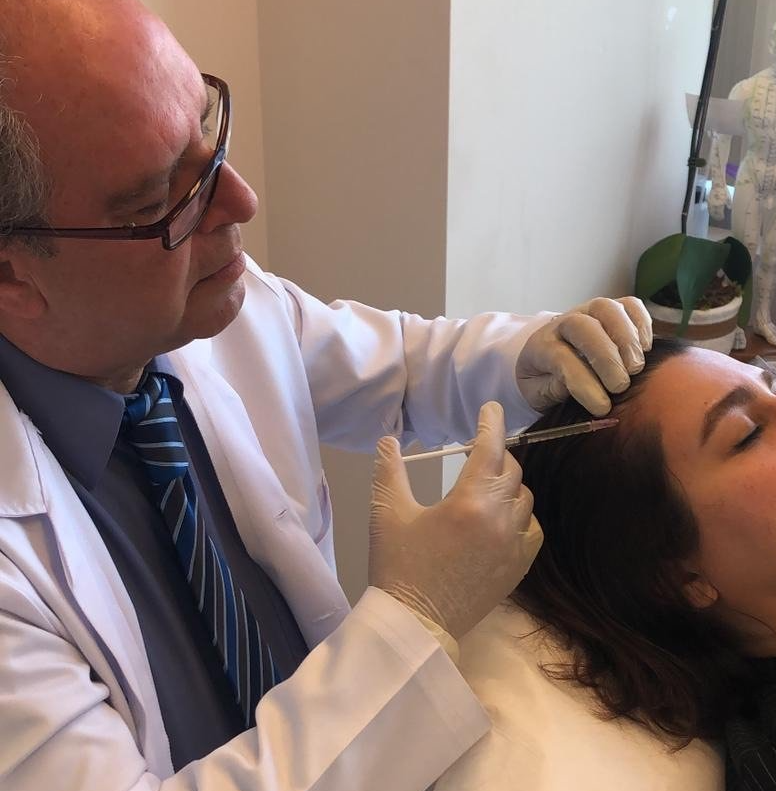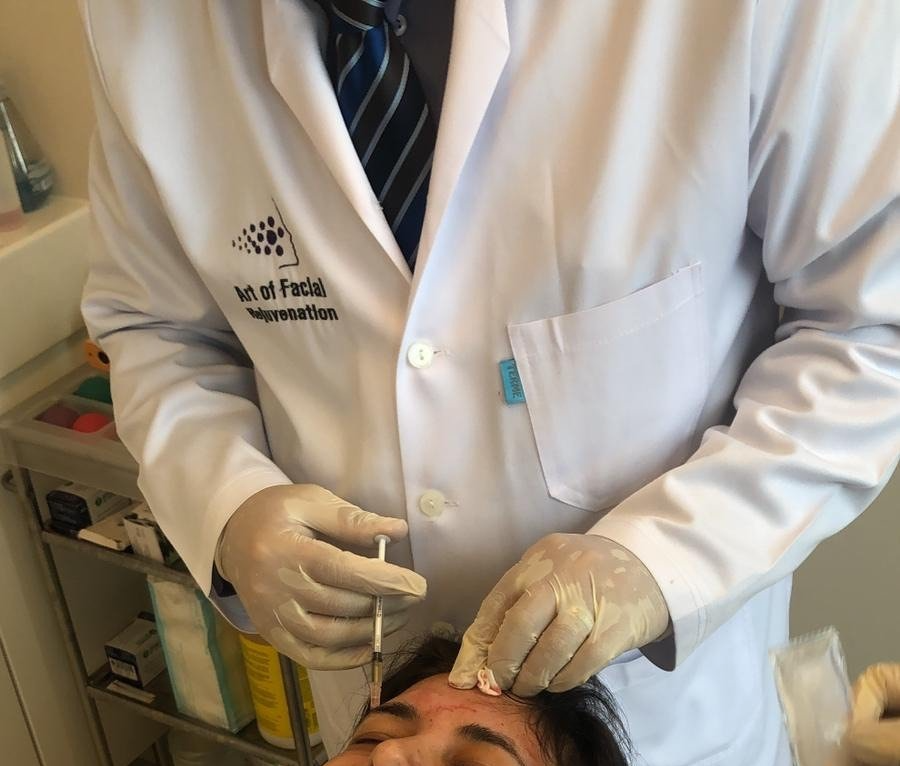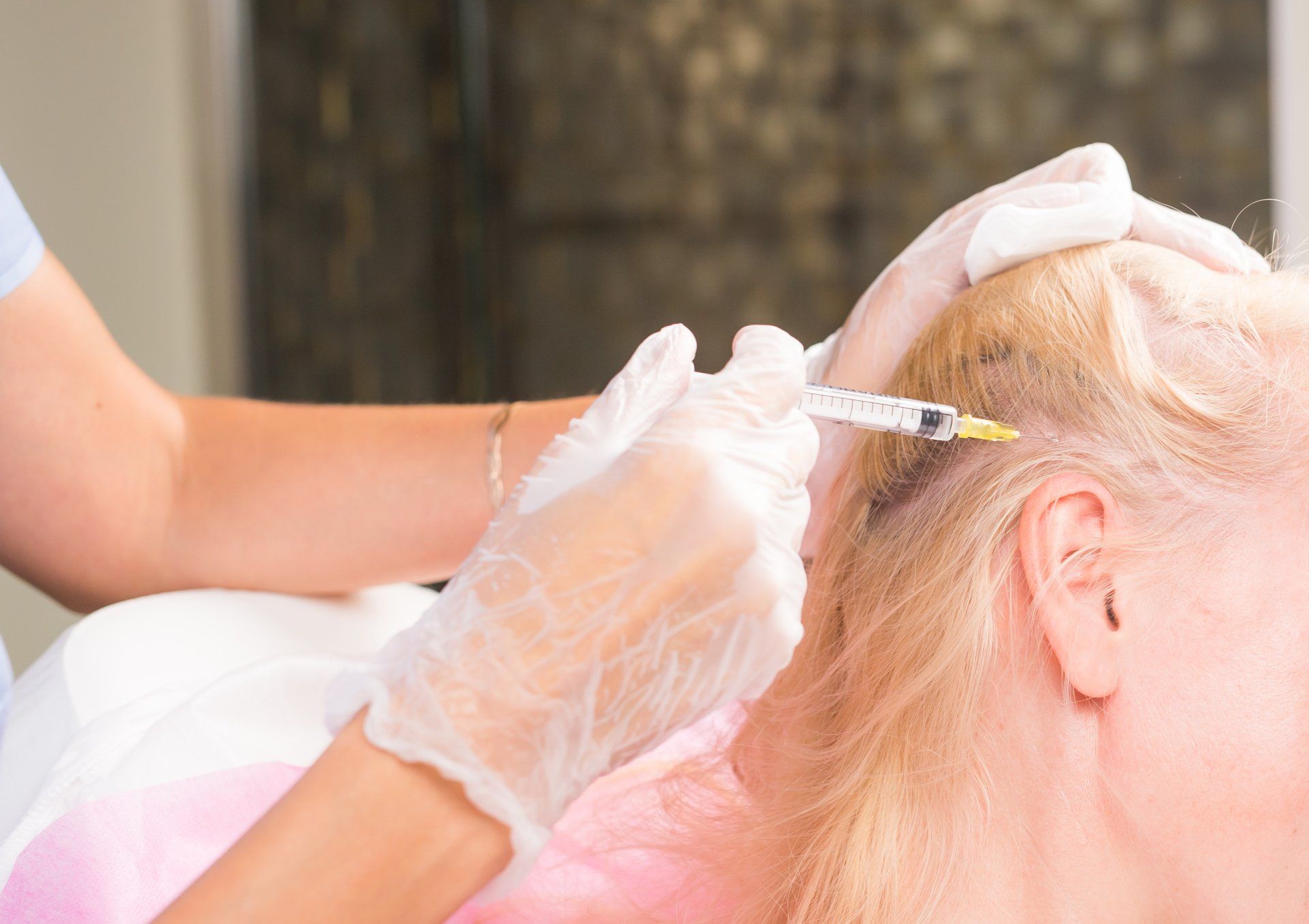VIP Services, Affordable Pricing
PRP Hair Loss Treatment: What Do You Need to Know?
PRP (Platelet-rich plasma) hair loss treatment is one of the most common methods for fighting balding. It depends on using the person’s own platelets to fight balding and reverse hair loss. It also affects the existing hair and makes it thicker and stronger.
Platelets are one of the components of your own blood that helps in recovering from injuries. This treatment uses this power of recovery to stimulate hair growth as long as the hair follicles are already present. The plasma injections are fast and don’t take time to recover.
Let’s discuss this option in detail.
Book an appointment
What is PRP Hair Loss Treatment?
PRP is a hair loss treatment composed of three steps. The first step is taking a person’s own blood, processing it, and then injecting it into the scalp in order to stimulate hair to grow back and make the existing hair stronger.
There are many theories explaining why PRP treatment is effective. Some are convinced that PRP effectivity is due to providing hair follicles with sufficient blood supply. Others suggest that the effectivity of PRP is due to increasing the thickness of the hair shaft. Some think it is due to both mechanisms.
There is no enough research to support any claims. However, the process has been used for decades and it has shown great results. It is not only used for fighting balding but also to healing muscle and tendon injuries.
Book an appointment
How Does PRP Hair Loss Treatment Work?
Platelets are one of the components of our blood and they play important roles in our bodies.
One of the platelets’ functions is to make blood clots. Blood clots are responsible for stopping bleeding when you are injured. Another function is that it contains proteins that help our bodies to heal fast.
Studies suggest that by injecting a high concentration of platelet-rich plasma in the affected areas, it will enhance the tissues to heal.
The process depends on taking a blood sample from the person. This sample is then put in a centrifuge. The centrifuge spins at very high speeds and this separates the platelets from the other components of the blood. Then the final step is to inject the platelets into the treated area.
Because of the high concentration of platelets, scientists suggest that the platelets heal the tissues faster.
Book an appointment
PRP Hair Loss Treatment Process Steps:
The PRP hair loss treatment is formed of three steps.
Book an appointment
1. The First Step:
A blood sample is taken from your arm and put into a centrifuge. A centrifuge is a machine used to separate the components of a fluid by spinning at high speeds. Each component has a different density and when the fluid spins very fast, they separate from each other.
2. The Second Step:
Your blood is left in the centrifuge for about 10 to 15 minutes. It is now formed of three main layers; Red Blood Cells (RBCs), platelets-poor plasma, and platelets rich plasma.
3. The Third Step:
The platelet-rich plasma layer is what matters. It is usually drawn into a syringe and then injected into the balding areas of the scalp.
Please notice that there is no evidence that PRP hair loss treatment works for everyone. It may be effective for you but not effective for another person.
According to this study, which explains whether the use of platelet-rich plasma in treating androgenic alopecia or male baldness pattern is effective or not, a lot of research is still required to make sure that PRP hair loss treatment, is an effective hair restoration treatment.
PRP Hair Loss Treatment Side Effects:
According to Healthline.com, PRP hair loss treatment may have some side effects. You won’t get any communicable diseases (Diseases transferred from one person to another) because it's your own blood. However, there are some risks such as
Book an appointment
1.
Causing an injury to a blood vessel or a nerve while injecting the platelet-rich plasma.
2.
Infections.
3.
Calcifications at point of the injection.
4.
Scars.
5.
Negative reactions to the anesthesia used in the treatment. That is why your doctor should have you tested before injecting anesthesia.
Please notice that once you agree to proceed, you already are aware that there are some risks.
PRP Hair Loss Treatment Risks:
When you decide to have a PRP, make sure to inform your doctor with your full medical history including any hair regrowth supplements or herbs you have taken before.
Book an appointment
Your doctor may recommend not having a PRP if one or more of the following is applied to you:
• If your blood is thin. Thin blood means that you have few platelets.
• If you are a heavy smoker.
• If you are alcoholic or have a history of abusing drugs.
Also, you can’t have a PRP if you have one of the following medical conditions:
• Acute Infection.
• Chronic Infection.
• Any Type of Cancer.
• Chronic Hepatic Disease. The liver plays an essential role in making blood components.
• Skin Diseases.
• If you are hemodynamically unstable.
• Platelets Dysfunctions.
• Bacteremia and Sepsis.
Final Thoughts:
Platelet-rich plasma (PRP) is one of a treatment option for people looking for therapy for hair loss and hair regrowth. The increased hair will be exactly as your original hair.
Book an appointment
PRP therapy is also a good way to promote hair and make your existing hair thicker and fuller.





